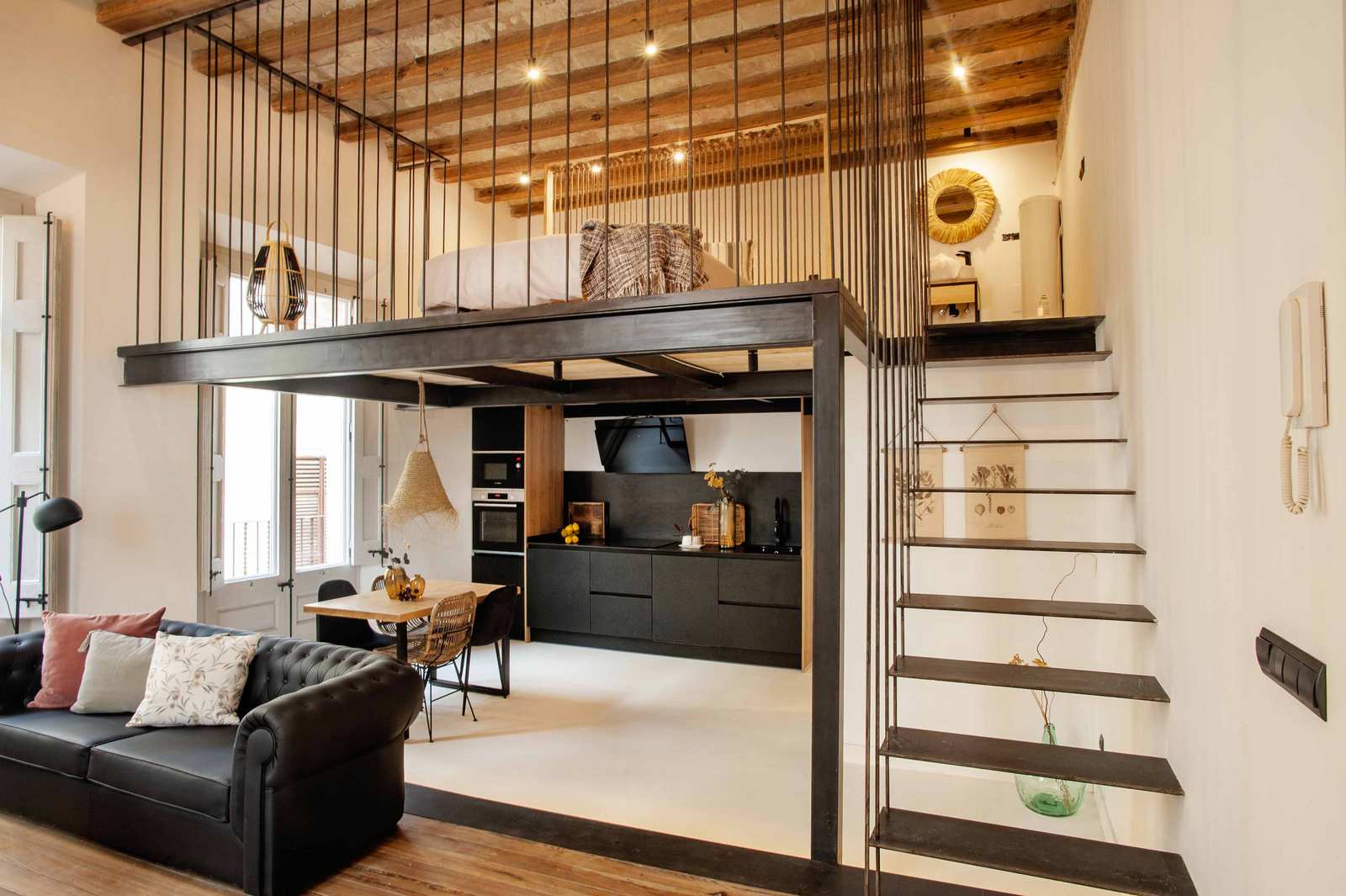Kate Ellison and husband Robert wanted to revamp their north London home but were limited to what they could do.
Deciding they wanted quite a big change, the couple were soon met with complications when planning permission was needed.
The pair had no choice but to put their heads together and think outside the box – as they didn’t want to have to submit applications or wait for approval.
They opted to add a mezzanine to the property, creating an entirely new floor in the process.
Kate said: “It creates such an interesting, modern space.
“It really gives the house that wow factor.”
For a bit of privacy, those looking to copy Kate and Robert’s renovation can buy an Ikea Tolkning room divider for just £99.
The mezzanine now hovers above a cupboard in their home providing an extra layer and space.
Kate said: “It creates such an interesting, modern space.
“It really gives the house that wow factor.”
The easy hack comes after Michael Gove announced a raft of policy measures this week including changes to permitted development rights.
A consultation on the proposed changes sets out how homeowners could build wider and taller extensions without planning permission.
The plans include L-shaped wraparounds, loft conversions and kitchen extensions.
The document, published on Tuesday, also proposes to scrap rules which mean extensions and other buildings must not exceed 50 per cent of the land surrounding it, known as the “curtilage”.
Homeowners will also be able to convert as much loft space as they want without permission.
It is part of a broader effort by the Conservatives to support a “gentle densification” of towns and cities across the country.
How to appeal and win if your home extension is rejected
EXTENSIONS are a great way to improve your home and save money – as building out is often cheaper than moving.
But any building works can quickly create problems with your neighbours if you don’t stick to the rules.
Andrew Cann, director of Planning Direct, a planning consultancy based in the East of England, said there are ways to appeal if your initial application for an extension is rejected.
Here’s what you need to know:
How do you actually appeal?
In order to appeal, you’ll need to prepare a Statement of Case.
This is a document setting out why you believe the extension should be granted in planning policy terms – an expert can help you with this, but they will charge.
This is sent along with an appeal form to the Planning Inspectorate.
This is a government body independent of your local council, which will check whether the planning authority which refused you was correct to do so.
There is normally no fee to submit a planning appeal to the Planning Inspectorate.
The main cost is the fee you’ll need to give a consultant or solicitor to prepare and manage it on your behalf – the amount will depend on the case.
How do I win my appeal?
The truth is, there is no guarantee to winning your appeal – and you should be wary of any solicitor or consultant that promises you a victory.
“Any one consultant who says an appeal will definitely be won should be avoided” said Andrew.
That said, there are some tips that can help you on your way to a win.
“Take a look around – if other nearby homeowners have made similar changes, the chances are you will win,” said Andrew.
Another thing to look out for is that your application may have been refused on a technicality or just because of a missing detail.
“Sometimes it is worth re-applying with a modified version if the council only wants small changes. A re-application is free within a year of the first refusal,” said Andrew.
But if an appeal is mishandled and refused this can “blight” the property and you will not get permission in future.
There are some challenges when you are looking to appeal.
You must establish that the extension complies with local planning policy and importantly does not harm others.
Gove’s proposed extension plans
Single-storey extension
Current rules: Restricted to 3m in depth on most houses and 4m in depth on detached properties.
New rules: Increased to 4m depth on most houses and 5m on detached homes.
Rear two-storey extension highest point
Current rules: Must not be higher than the highest point of the house.
New rules: Can be as high as the highest part of the house – but must not be visible from the street.
Loft extension
Current rules: Limits conversions to 50 cubic metres in most cases or 40 cubic metres in terraced houses.
New rules: Homeowners would be allowed to convert as much loft space as available.
L-shape extensions
Current rules: Need to have planning permission.
New rules: Won’t need planning permission.
Extension sizes
Current rules: Extensions and other buildings must not exceed 50 per cent of the land surrounding it, known as the “curtilage”.
New rules: Can cover more than 50 per cent of the surrounding area.
How can I challenge a neighbour’s development?
IF a new or existing structure is blocking light from entering your home, you have a right to challenge it.
The first thing you should do is have a word with your neighbour – they might not realise the impact it has on your home.
If they’re unwilling to reach an agreement, you have the right to take legal action – but bear in mind that this can be expensive.
First you could try a mediation service, which acts as a neutral third-party to help opposing sides find a compromise.
RICS has set up a Neighbour Disputes Service to negotiate agreements between homeowners.
If you decide to take further action, you’ll need to hire a professional right to light specialist who can assess the impact of the development.
If you raise the issue before construction starts, the need for natural light can be taken into account and avoid court action and solicitors.
But even if building work is finished, neighbouring homeowners can raise a right to light claim for compensation or alterations, so long as evidence is submitted.
If it gets as far as the courts judges can award either financial compensation or order alterations to restore natural light.
The amount of compensation available will vary depending on the situation.


